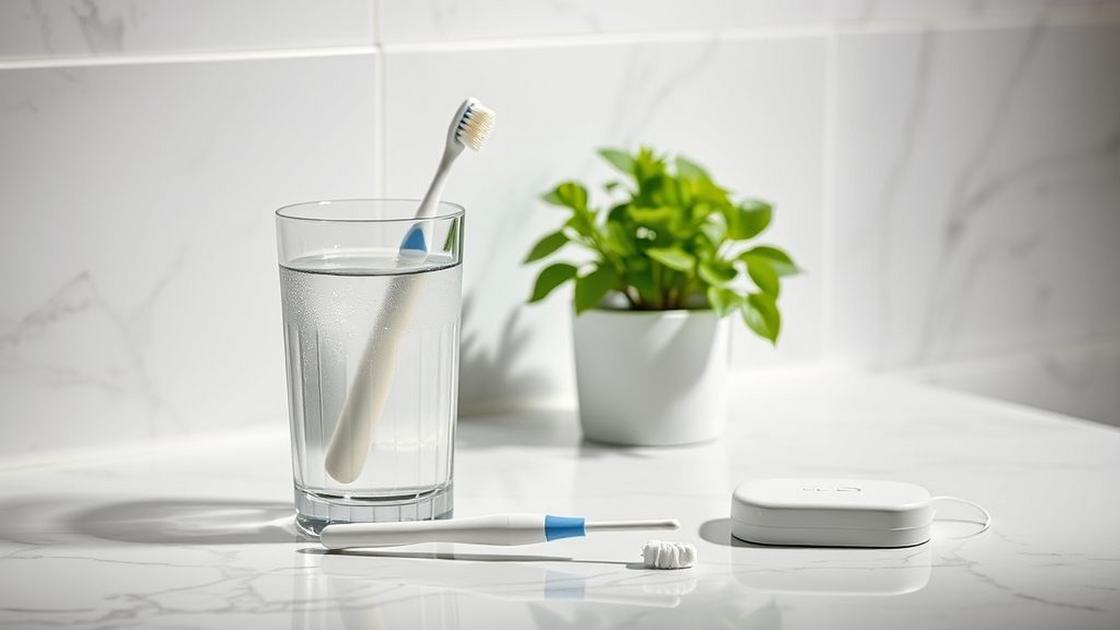Are you looking for an affordable and effective way to achieve a brighter smile? Whitening your teeth naturally with baking soda may be the answer you’ve been searching for. Many women, especially those over 30, face challenges like stained teeth due to coffee, tea, or everyday aging. In this article, we’ll explore how this simple kitchen ingredient can help enhance your smile without harmful chemicals.
Understanding the Benefits of Baking Soda for Teeth
Baking soda, also known as sodium bicarbonate, is a versatile household ingredient that has been used for decades in cooking and cleaning. When it comes to oral care, baking soda offers several remarkable benefits:
- Natural Whitening: One of the most sought-after benefits of baking soda is its ability to help whiten teeth. It acts as a gentle abrasive, removing surface stains caused by coffee, tea, wine, and other staining agents.
- Safe pH Balance: Baking soda helps neutralize the acids in your mouth, promoting a healthier oral environment.
- Fresh Breath: Its natural odor-neutralizing properties make baking soda effective in combating bad breath.
- Cost-Effective: Compared to commercial teeth whiteners, baking soda is inexpensive and readily available, making it an economical choice for dental care.
Incorporating baking soda into your dental routine can be a beneficial step toward achieving a brighter smile.
How Baking Soda Works to Whiten Teeth
So, how does this simple ingredient work its magic? Baking soda has mild abrasive properties that can help scrub away plaque and surface stains. When you brush your teeth with baking soda, it gently polishes your enamel, revealing the whiter teeth underneath. Here are some key points to remember:
- Enamel Safety: When used correctly, baking soda is safe for your tooth enamel and should not cause damage.
- Stain Removal: It effectively removes stains that accumulate on the surface of the teeth, restoring their natural brightness.
- Regular Use: Regular application can lead to more noticeable results over time, enhancing the overall appearance of your smile.
These qualities make baking soda a popular and practical choice for those looking to brighten their smile naturally.
Easy Steps to Create Your Baking Soda Whitening Paste
Creating a baking soda whitening paste is a simple and effective process. Here’s a step-by-step guide:
- Gather Your Ingredients: You will need baking soda, water, and, optionally, a few drops of lemon juice or hydrogen peroxide for added whitening benefits.
- Mix the Paste: Start with two tablespoons of baking soda and mix it with just enough water to form a paste. You want it to be thick enough to stay on your toothbrush.
- Add Flavor (Optional): If desired, add a few drops of lemon juice or hydrogen peroxide for extra whitening power.
- Application: Use your toothbrush to apply the paste to your teeth, focusing on stained areas.
- Time It Right: Allow the paste to sit on your teeth for about 2 minutes. This will give it time to do its job.
- Rinse Thoroughly: Rinse your mouth with water and brush your teeth with regular toothpaste afterward to ensure all residues are gone.
This paste can be used a few times a week for best results.
Tips for Applying Baking Soda Safely
While baking soda is generally safe for teeth, there are some important guidelines to keep in mind:
- Avoid Overuse: Limit the use of baking soda to 2-3 times a week to prevent any potential enamel abrasion.
- Brush Gently: When applying the paste, use gentle motions to avoid damaging your teeth and gums.
- Monitor Sensitivity: If you experience increased tooth sensitivity or irritation, reduce the frequency of use or discontinue if necessary.
- Consult Your Dentist: Before starting any whitening regimen, it’s best to consult with your dentist, especially if you have dental concerns.
Staying informed helps you achieve the best results while protecting your dental health.
Prevention: Keeping Your Teeth White Longer
After whitening your teeth with baking soda, adopting a few habits can help maintain their brightness:
- Regular Oral Hygiene: Brush your teeth twice daily and floss regularly to remove plaque buildup.
- Limit Staining Foods: Be mindful of foods and drinks that can stain your teeth, such as coffee, tea, red wine, and berries.
- Drink Through a Straw: When consuming stain-causing beverages, using a straw can help minimize contact with your teeth.
- Regular Dental Check-ups: Visit your dentist regularly for cleanings and check-ups to maintain oral health.
Implementing these tips can keep your teeth looking whiter and healthier for longer.
Common Myths About Teeth Whitening
There are many myths surrounding teeth whitening that can lead to misunderstandings. Let’s debunk a few:
- Myth 1: Baking soda will damage my enamel. Fact: When used in moderation, baking soda is safe for tooth enamel.
- Myth 2: Whitening is harmful to gums. Fact: Proper application minimizes gum irritation; always follow safety tips.
- Myth 3: Only professional treatments work. Fact: DIY methods, like baking soda, can be effective in achieving a brighter smile.
Understanding the facts can help you make informed choices about your teeth whitening journey.
Baking Soda vs. Commercial Teeth Whiteners
Many women may wonder how baking soda compares to commercial teeth whiteners. Here’s a comparison:
- Cost: Baking soda is significantly cheaper than most commercial whitening products.
- Ingredients: Baking soda has fewer chemicals than many commercial whiteners, making it a more natural option.
- Efficacy: While commercial products may provide faster results, baking soda can still effectively remove surface stains over time.
- Safety: Baking soda is generally safe when used properly, while some commercial products can cause sensitivity and gum irritation.
This makes baking soda a compelling option for those seeking a natural and budget-friendly alternative.
Addressing Sensitivity After Use
Some people experience sensitivity when using baking soda for whitening. If you notice discomfort, consider these tips:
- Limit Frequency: Cut back on how often you use baking soda if you notice sensitivity.
- Desensitizing Toothpaste: Use a toothpaste designed for sensitivity to help alleviate discomfort.
- Consult Your Dentist: If sensitivity persists, discuss it with your dentist for personalized advice.
Taking care of sensitivity should be a priority in your whitening journey!
Complementing Baking Soda with Other Natural Remedies
Baking soda can be paired with other natural remedies for enhanced whitening. Here are a few options:
- Coconut Oil: Oil pulling with coconut oil can further enhance oral health and may help in whitening.
- Activated Charcoal: This can be used in conjunction with baking soda for a powerful whitening effect.
- Apple Cider Vinegar: Diluted with water, this can be used to rinse and may aid in stain removal.
Experimenting safely with these remedies can bring about synergistic effects to brighten your smile even more.
Sharing Your Whitening Journey: Inspiring Others
Your journey to a whiter smile can inspire others! Share your experiences, before and after photos, and tips with friends and family. Connecting with others who are on a similar journey can create a supportive community. Consider:
- Social Media Posts: Document your journey and share your results online.
- Blogs and Forums: Join discussions on dental care and share your baking soda experiences.
- Word of Mouth: Talk to your friends about your success with baking soda and encourage them to try it.
By sharing, you not only celebrate your success but also empower others to start their own wellness journeys. Remember, achieving a brighter smile can be done through simple, natural steps, just as many women have experienced. Embrace the process and shine bright!






